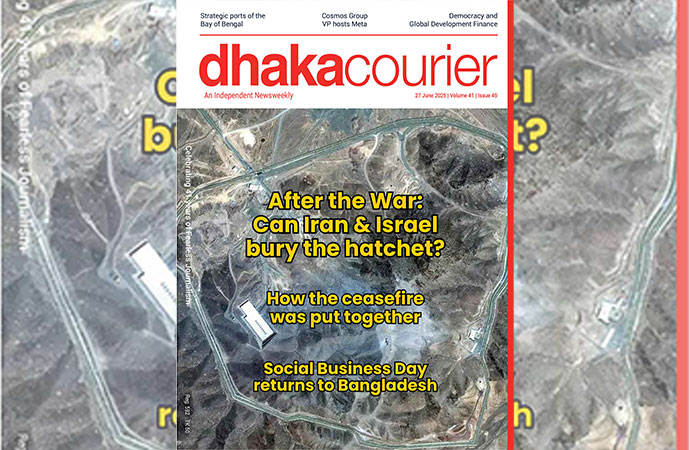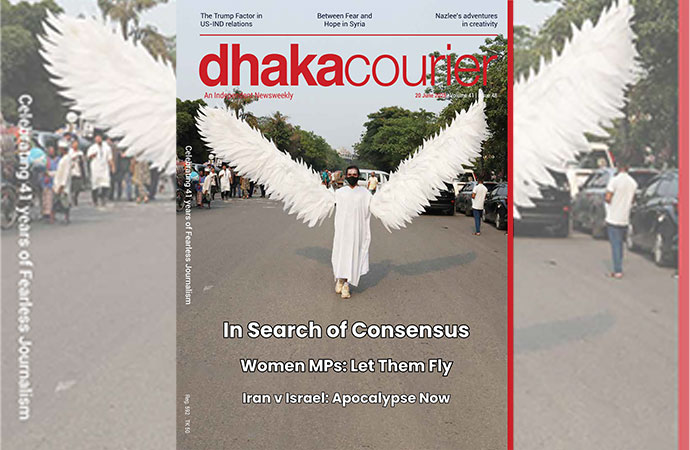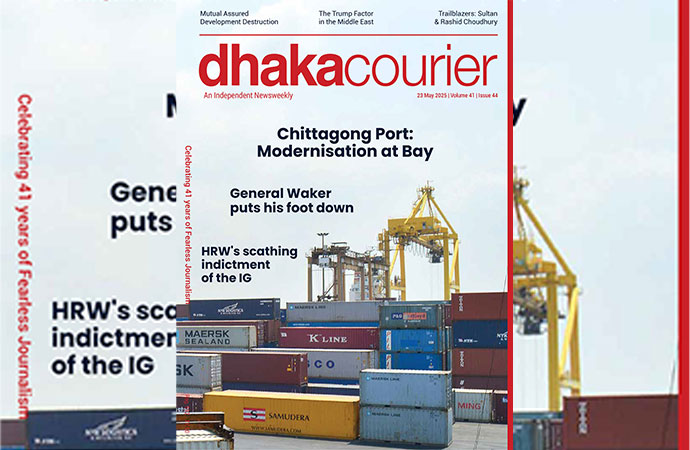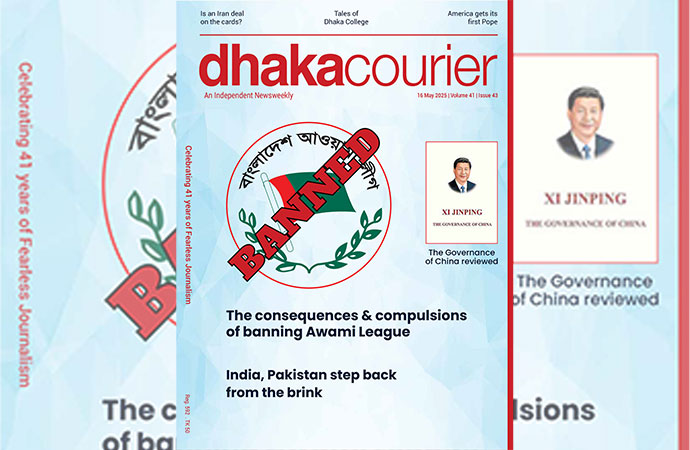Culture

Photo: Collected
State Minister for Power, Energy and Mineral Resources Nasrul Hamid together with French Ambassador to Bangladesh Marie Masdupuy on Wednesday evening opened an exhibition, titled "Learning from Old Dhaka: Exploring the Future of Living Traditions."
Alliance Francaise de Dhaka and Hamidur Rahman Cultural Centre in Zinzira, Keraniganj jointly hosted the exhibition.
At the beginning, the French Ambassador paid tribute to the martyrs of the Language Movement marking the International Mother Language Day.
She wholeheartedly thanked State Minister Nasrul Hamid for hosting the beautiful exhibition at Hamidur Rahman Cultural Center which she visited for the first time.
Ambassador Masdupuy recalled renowned architect Marina Tabassum who designed the Cultural Centre.
"This exhibition is the result of a yearlong project launched by Alliance Française of Dhaka in cooperation with architecture students coming notably from France (École de la Villette) and Bangladesh (BUET), showcasing the very rich and peculiar history of Puran Dhaka (Old Dhaka) through its architecture and the life and activity around the Buriganga," she said.
"It's here also that Farashganj is located, the old French merchants' settlement, and also where the ancestors of the state minister established themselves three hundred years ago," the Ambassador said.
She concluded by applauding the two French artists who showed them an extraordinary performance with a group of Buriganga coolies about all the industrial and handicraft landscape in Zinzira.
Zinzira, nestled on the southern fringes of Dhaka by the Buriganga River, is known for its small industries that serve as the city's backbone. This exhibition not only celebrates the architectural and cultural heritage of Old Dhaka but also fosters a dialogue between the past and the present, showcasing the potential for traditional practices to inform future urban living.
The two-week-long architectural exhibition will continue till March 10 at Hamidur Rahman Cultural Centre of Keraniganj.
State Minister Nasrul Hamid said the topics they explored were the endangered heritage of Old Dhaka, circular economy, urban agriculture, public space allocation systems and the corporate culture of Old Dhaka.
He also said their excellent work will help Bangladeshi architects understand heritage of Dhaka better and use these as reference.
The exhibition is the outcome of a two-week architectural research study by a group of architecture students from the universities of ENSA, Paris la Villette; BUET, Dhaka; BVCOA, Navi Mumbai; C.A.T., Trivandrum; and Mokpo University, South Korea.
They split into several working groups to investigate endangered heritage, circular economy, urban agriculture, innovation as part of traditional activities, informal sectors, public space distribution, and corporate culture in Puran Dhaka (Old Dhaka).
Amid its rapid growth, Dhaka risks losing its architectural and living heritage.
An intricate relationship exists between Puran Dhaka and the river Buriganga, and this field workshop will explore this relationship and highlight the various aspects of living heritage still thriving in the old labyrinths of the city.
A team of 44 students and 12 mentors worked together to map and document these aspects of the old city.
Organisers say the study encompasses various elements, including the evolution of Bara Katra from a residential area in Mughal times to an economic hub for the neighbourhood, albeit losing its original purpose.
It explores the hierarchy of public open spaces in the Armanitola neighbourhood and delves into the traditional craft of Shankhari bangle-making by learning from Shankhari artisans.
Additionally, it examines the preservation of Bangla culture in Tanti Bazar, where the sheen of gold contributes to the swift transformation of the built heritage, they say.
The study also highlights the enduring literary and cultural legacy in Bangla Bazar, the presence of Gol Talab as a rare oasis in densely populated Puran Dhaka, and the changes in the mansions of Zamindars in Mongolabash. Finally, it delves into the wood-to-paper connections in the Farashganj neighbourhood, they say.
The opening was followed by a performance art titled "Gaaner Kuli."
Enthusiasts can visit the exhibition from 10am to 5pm daily.

























Leave a Comment
Recent Posts
Cosmos Group VP Nahar Khan hos ...
A visiting delegation from Meta, the parent company of Facebook, Insta ...
Break the gloom, build a bette ...
Emphasising the transformative power of social business and its strong ...
‘Mobocracy’ must not prevail
The US Supreme Court allowed the Trump administratio ..
Germany dependable partner in our development journe ..
15th edition of Social Business Day: Prof Yunus to j ..